It’s time for farmers and gardeners to focus on growing winter wheat as the days get shorter and the temperatures drop. Winter wheat is a tough, adaptable grain crop that does best in milder climates, making it a great option for planting in the fall.
This thorough post will cover everything you need to know about planting winter wheat seeds, from picking the best variety to taking care of your crop all winter.
What is winter wheat?

An autumn-planted variety of wheat called winter wheat (Triticum aestivum) overwinters in the field. Winter wheat is planted in the fall and receives vernalization, a cold treatment required for flowering, as opposed to spring wheat, which is sown in the spring and harvested within the same growing season. Winter wheat can start growing again in the spring and mature by early summer, thanks to this mechanism.
Key Characteristics
Winter wheat exhibits several key characteristics that make it an attractive crop for many farmers:
- Cold Tolerance: Winter wheat can withstand freezing temperatures and snow cover during the winter months, making it well-suited for regions with harsh winters.
- High Yield Potential: This crop typically yields more than spring wheat, thanks to its longer growing season and the ability to take advantage of early spring moisture.
- Versatility: Winter wheat is used for various purposes, including bread and pastry flour production, animal feed, and cover cropping.
Benefits of Growing Winter Wheat
There are several compelling reasons to consider planting winter wheat:
- Crop Rotation: Winter wheat can be an essential part of crop rotation, helping break pest and disease cycles and improve soil health.
- Profitability: With its higher yield potential compared to spring wheat, winter wheat can be more profitable for farmers.
- Soil Erosion Control: Winter wheat helps prevent soil erosion during the winter months, thanks to its strong root system and ground cover.
Now that we’ve introduced winter wheat, let’s delve into the details of selecting the right variety.
Choosing the Right Variety
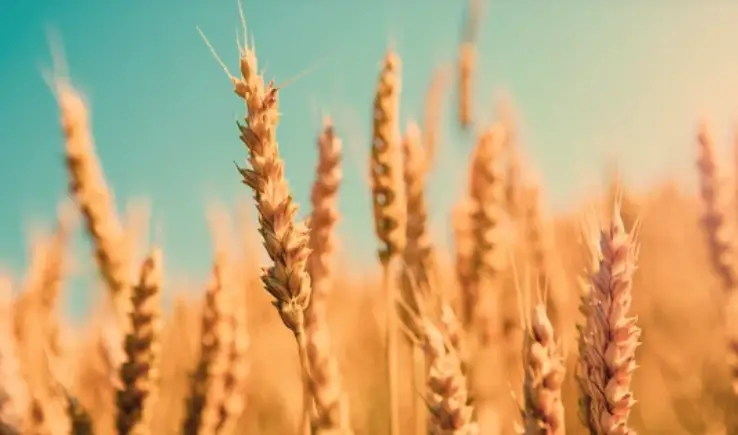
Winter Wheat Seeds
Common Winter Wheat Varieties
There are various winter wheat varieties to choose from, each with its own unique characteristics and adaptability. Some common winter wheat varieties include the following:
- Hard Red Winter Wheat: Known for its high protein content and excellent bread-making quality, hard red winter wheat is widely grown in the central and southern United States.
- Soft Red Winter Wheat: This variety is primarily used for pastry flour and is popular in the eastern and southern United States.
- Hard White Winter Wheat: Hard white winter wheat is prized for its mild flavor and is often used in Asian-style noodles and tortillas.
- Soft White Winter Wheat: Soft white winter wheat is ideal for cakes, pastries, and cookies due to its low protein content and delicate flavor.
Factors to Consider When Selecting a Variety
Choosing the right winter wheat variety requires careful consideration of several factors:
- Climate and Region: Select a variety that is well-suited to your local climate and growing conditions. Some varieties are better adapted to specific regions.
- End Use: Consider the intended use of your wheat crop. Are you planning to sell it for milling into flour, or is it primarily for animal feed?
- Disease Resistance: Check for disease resistance characteristics in the variety you choose. Some varieties are more resistant to common wheat diseases.
- Yield Potential: Review historical yield data for the varieties you’re considering to ensure they align with your production goals.
Local Adaptation
To find out which winter wheat varieties have a successful track record in your area, it is crucial to speak with knowledgeable farmers or your local agricultural extension services. Because cultivars that thrive in your area are more likely to tolerate local weather conditions and insect pressures, local adaptation can be a crucial component in the success of your crop.
Preparing Your Soil
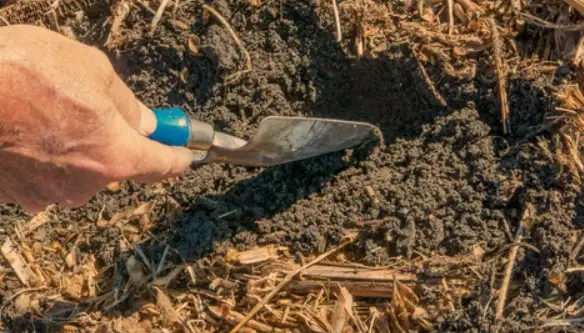
Soil Testing
Doing a soil test to evaluate nutrient levels, pH, and other soil characteristics is essential prior to planting winter wheat. You can evaluate whether amendments are necessary to improve the soil’s properties for your crop by conducting a soil test. Crop health and productivity can be greatly impacted by adjusting pH and treating nutritional shortages.
Soil Amendments
Based on your soil test results, you may need to add soil amendments such as lime to adjust pH or organic matter to improve soil structure. Proper soil preparation ensures that your winter wheat has access to essential nutrients and moisture.
Soil Preparation Techniques
Effective soil preparation is essential for a successful winter wheat crop. Some techniques to consider include:
- Tillage: Depending on your farming practices, you may use conventional or conservation tillage. No-till and reduced-till practices can help preserve soil structure and reduce erosion.
- Seedbed Preparation: Create a firm, level seedbed to promote uniform seed placement and germination.
- Weed Control: Eliminate existing weeds before planting to reduce competition for resources.
With your soil prepared, let’s move on to the crucial steps of planting winter wheat seeds.
Planting Winter Wheat Seeds
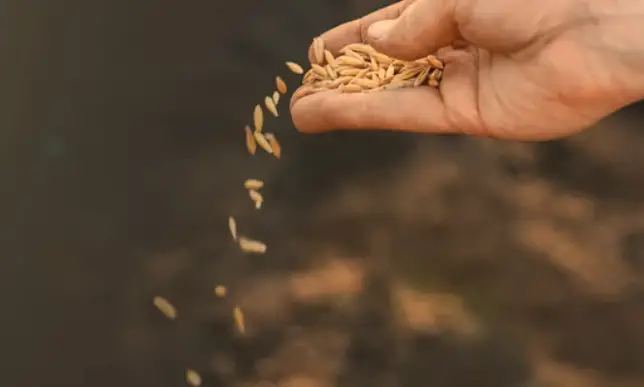
Winter Wheat Seeds for Planting
Ideal Planting Time
The timing of winter wheat planting is critical. It should be done in the fall, typically between late September and early November, depending on your region. The goal is to allow the crop to establish before winter sets in.
Seeding Rates and Spacing
Proper seeding rates and spacing are essential for achieving optimal plant populations and maximizing yield potential. The recommended seeding rate for winter wheat usually ranges from 1.2 to 2.0 million seeds per acre. However, this rate can vary depending on factors like seed size and local conditions.
Seed Depth and Row Spacing
Plant winter wheat seeds at a depth of approximately 1 to 1.5 inches. Ensure that seeds are evenly spaced within rows. Row spacing can vary but is typically between 6 and 12 inches, depending on equipment and management practices.
Fertilizing and Nutrient Management
Nutrient Requirements
Winter wheat has specific nutrient requirements, with nitrogen (N), phosphorus (P), and potassium (K) being the primary macronutrients. Adequate N is crucial for achieving high yields and protein content in the grain.
- Nitrogen (N): Most of the N required for winter wheat should be applied in the fall, usually around the time of planting. However, additional spring applications may be necessary to meet the crop’s needs.
- Phosphorus (P) and Potassium (K): Soil test results will help determine the need for P and K fertilization. These nutrients are essential for overall plant growth and development.
Fertilization Timing
- Fall Fertilization: Apply the bulk of your N fertilizer in the fall, typically at or shortly after planting. This helps the crop establish strong roots and prepares it for winter.
- Spring Fertilization: Depending on soil conditions and crop growth, consider applying additional N fertilizer in the spring to support vegetative growth and grain development.
Organic vs. Synthetic Fertilizers
Farmers can choose between organic and synthetic fertilizers. Organic options include compost, manure, and organic matter amendments, while synthetic fertilizers provide precise nutrient ratios. The choice often depends on the specific needs of your crop and your overall farming philosophy.
Weed and Pest Control
Common Wheat Pests and Diseases
Winter wheat can face various pests and diseases, including:
- Aphids
- Armyworms
- Hessian flies
- Stripe rust
- Powdery mildew
- Septoria leaf blotch
- Fusarium head blight
Integrated Pest Management (IPM) practices involve monitoring for these threats and taking appropriate action when necessary.
Integrated Pest Management
IPM strategies aim to minimize the use of chemical pesticides while effectively managing pests and diseases. Some IPM practices for winter wheat include:
- Scouting: Regularly inspect your crop for signs of pests and diseases.
- Crop Rotation: Rotate crops to disrupt pest and disease life cycles.
- Beneficial Insects: Encourage natural predators of pests in your fields.
- Resistant Varieties: Choose winter wheat varieties with resistance to common diseases.
- Timely Planting: Planting at the recommended time can help reduce certain pest pressures.
Herbicide Options
For weed control, herbicides may be necessary. Selective herbicides that target specific weed species while preserving your winter wheat crop are commonly used. Always follow label instructions and use herbicides responsibly.
Winter Wheat Care During the Winter Months
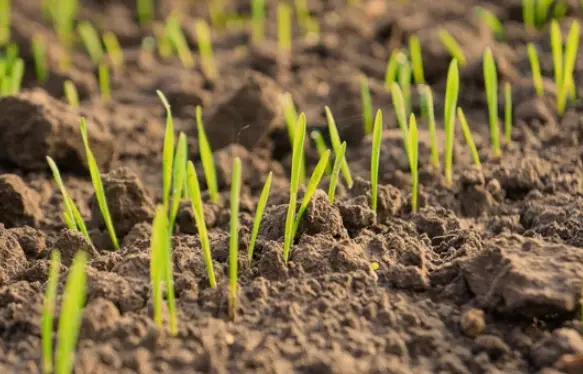
Winter Survival Strategies
As winter approaches, it’s essential to ensure that your winter wheat crop can withstand freezing temperatures and snow cover. Key strategies for winter survival include the following:
- Cold Hardiness: Choose winter wheat varieties with good cold hardiness.
- Snow Cover: Adequate snow cover can insulate the crop from extreme cold and temperature fluctuations.
- Avoiding Late Planting: Late planting can reduce winter survival rates, so stick to the recommended planting windows.
- Fall Fertilization: Provide the necessary nutrients in the fall to support root development.
Snow Cover and Insulation
Snow cover can act as a natural insulator, protecting the crop from severe cold. However, it’s essential to monitor snow cover depth to ensure it’s adequate. Deep snow can provide better insulation, while shallow snow may not offer sufficient protection.
Monitoring and Managing Winter Stress
Throughout the winter months, continue to monitor your crop for signs of stress. Address any issues promptly to ensure the crop’s health and vigor.
Spring Management

Spring Fertilization
As winter wheat breaks dormancy in the spring, it’s essential to provide the necessary nutrients for growth and grain development. Spring fertilization, typically with additional nitrogen, can boost yields and protein content.
Weed Control in the Spring
Spring is also a critical time for weed control. Address any emerging weed problems promptly to prevent competition for nutrients and water.
Monitoring Growth and Development
Regularly assess your crop’s growth and development in the spring. Proper management during this period can have a significant impact on the final yield and quality.
Harvesting and Yield
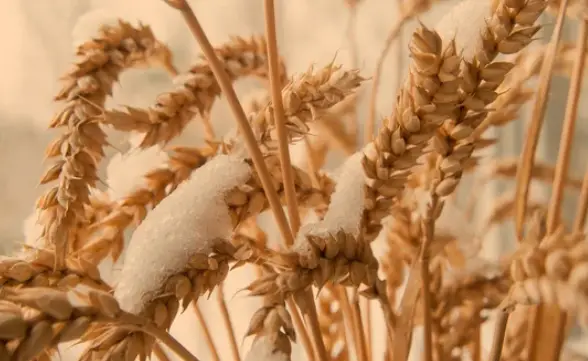
Winter Wheat Seeds for Planting
Harvest Timing
The timing of the winter wheat harvest is crucial to achieving the desired grain quality. Harvest too early, and you risk harvesting underdeveloped grain with a lower test weight. Harvest too late, and the grain may become overly mature and lose quality.
Typically, winter wheat is harvested when the grain moisture content falls between 13% and 15%. At this moisture level, the grain is suitable for storage and milling.
Yield Expectations
Yield expectations for winter wheat can vary widely depending on factors such as weather conditions, variety selection, and management practices. On average, you can expect yields of 50 to 100 bushels per acre, but higher yields are attainable under optimal conditions.
Harvesting Techniques
Modern combines equipped with advanced technologies are commonly used for winter wheat harvests. These machines efficiently separate the grain from the straw and chaff, producing clean, marketable wheat.
Post-Harvest Considerations
Crop Rotation
After harvesting winter wheat, consider implementing a crop rotation plan to break disease and pest cycles. Rotating with other crops like corn, soybeans, or cover crops can help improve overall farm productivity and soil health.
Cover Crops
Planting cover crops after winter wheat can protect the soil from erosion, improve organic matter content, and provide other benefits. Popular cover crops include clover, rye, and radishes.
Soil Health and Conservation
Maintaining soil health is an ongoing process. Continue to monitor soil conditions, address nutrient deficiencies, and implement sustainable practices to ensure the long-term productivity of your land.
Warp Up
Winter wheat is a robust and adaptable crop that can provide farmers and gardeners with a number of advantages. You may effectively cultivate winter wheat and take pleasure in a plentiful harvest by choosing the right type, preparing your soil, adhering to proper planting and nutrient management practices, and using efficient pest and weed control techniques.
Keep in mind that growing winter wheat successfully involves continual care and adjustment to shifting conditions. Winter wheat can be a useful component of your agricultural operations, enhancing the productivity and sustainability of your farm with the correct expertise and commitment.
Reference:
Smith, John. “The Basics of Winter Wheat Seeds for Planting.” Wheat Farming Insights, 2023, https://www.wheatfarminginsights.com/basics-of-winter-wheat-seeds.



